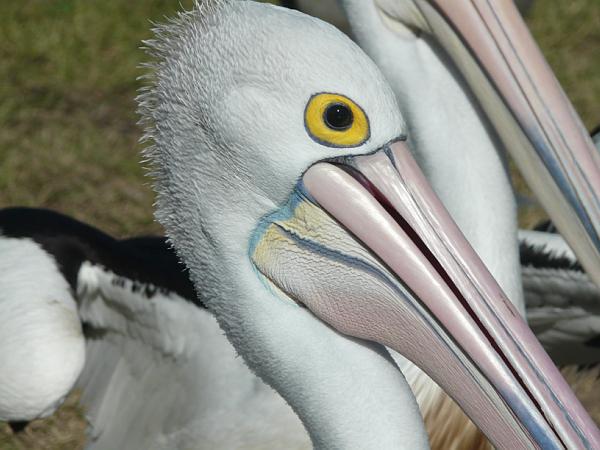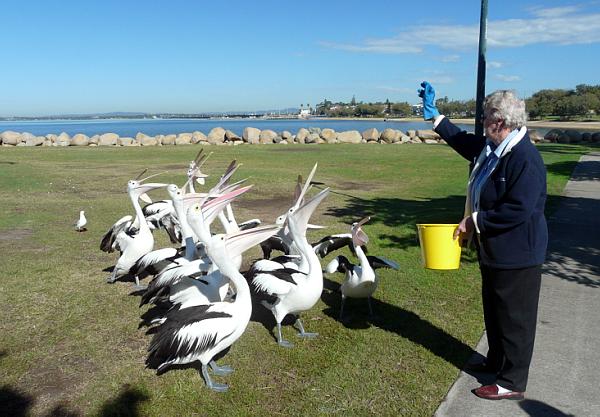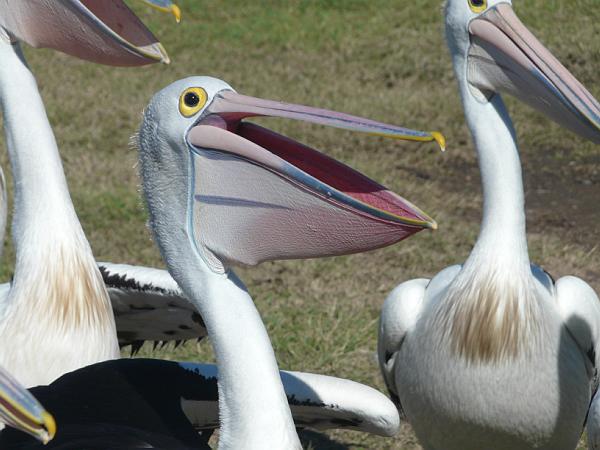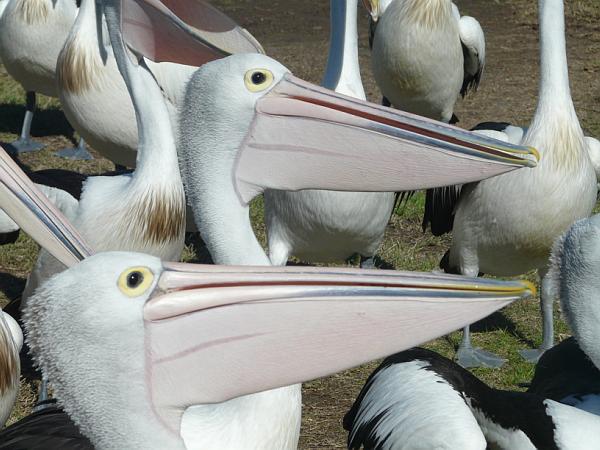Published in the Ocean Watch column, Honolulu Star-Advertiser © Susan Scott
August 1, 2008

BRISBANE, Australia » “A wonderful bird is the pelican. His bill can hold more than his belly can. He can take in his beak, food enough for a week, but I’m darned if I see how the helican.”
American newspaper editor Dixon Lanire Merrith wrote this catchy little limerick in 1910. It drives me crazy, because every time I see a pelican, my brain starts chanting the verse and repeats it over and over all day long.
That’s not so bad in Hawaii, but I’m in Brisbane tending to my sailboat and the black-and-white Australian pelicans are everywhere. I see these huge birds standing on the shoreline, paddling around the marina or gliding in formation over the river.
I didn’t have this poem problem when I was here in April. Nearly all the local pelicans were gone then, having flown by the thousands to the outback where unusually heavy rains had caused a fish and invertebrate bloom in desert lakes and rivers.
How the pelicans know such blooms are happening is a mystery, but they do know it and off they go.
I think of pelicans as marine birds, because that’s where I see them. But pelicans go where the food is, be it ocean, estuary, wetland, lake, river, island, fishing boat or human hands.
These bold birds are clever. When they see small boats coming back to the ramp at the end of a day’s fishing, the pelicans paddle out to greet the fisher, hoping for leftover bait. People here like their pelicans and the birds often get their treat.

The pelican’s famous pouch is not a storage container, but acts more like a net. The bird scoops water in with its fish, and then draws the pouch to its chest. As the water runs out, the bird positions the prey to go down the throat head first.
Pelicans also use the pouch to catch food tossed by humans, a skill in which they excel. At a famous dolphin feeding spot here in Australia, I had as much fun throwing fish to the pelicans as I did handing them to the dolphins.
A pelican’s pouch has a 3-gallon capacity, and can also hold turtles, gulls and ducklings.

These aren’t pelicans’ usual prey, but during times of starvation, they’ll eat anything they can catch. A famished pelican will hold gulls and ducks underwater to drown them before swallowing.
Sometimes pelicans hunt in groups. In Cairns last year, I watched a line of 10 pelicans paddle shoulder to shoulder to herd fish toward shore. When the fish were nearly grounded, the pelicans had a feast.
Of the world’s eight pelican species, the Australian pelican is medium size. But its bill is not. Of all birds in the world, the Australian pelican’s beak is the longest.
In medieval Europe, people believed pelican mothers drew their own blood to feed their young when no food was available. No one knows where this bizarre notion came from, but because of it, the pelican came to symbolize, in some Christian sects, the Passion of Christ.
To me, these odd-looking birds symbolize the marvel of evolution.
Since I’m going to be here awhile longer, I decided to trick my brain by memorizing a new pelican poem called “The Pelican Chorus” by Edward Lear (1812-1889): “King and Queen of the pelicans we. No other birds so grand we see! None but we have feet like fins, with lovely leathery throats and chins.”
Now two pelican poems are driving me crazy.
 All photos by Susan Scott
All photos by Susan Scott